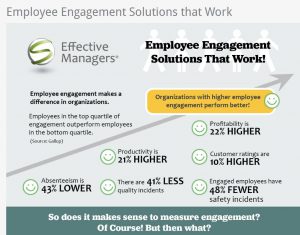
First, bear in mind that conflicts can occur even in the most collaborative workplaces. With so many individuals coming from diverse backgrounds and exhibiting unique personalities, it’s inevitable that there will be some form of conflict in the workplace at some point. This is because most roles are interdependent on other roles. And when there is a lack in trust and communication, conflict will surely arise.
Conflicts come in all forms. It could be someone outraged by the request of a colleague or someone who feels they are personally attacked by another member of the team. While conflict is prevalent in the workplace, it is also preventable. And if not entirely avoidable, it can at least be managed.
It takes proactive leadership to stop trouble from happening by recognizing the signs and acting right away. Good managers shouldn’t just be prepared to resolve conflict when it arises but also have the ability to take the preventive steps to avoid them from happening altogether.
Here are 4 tips that you can take avoid conflict in the workplace.
1. Set Context
This is one of the five requirements of effective managing but it bears repeating. The more context you can provide to each team member the better they understand how to use their judgment to make decisions consistent with your overall team goals. The more context you can provide to your team as a group, the more they will understand how best to collaborate. For example, Susan may feel pressured by a deadline, but when Kareem asks for collaboration, and Susan knows this project is important to you, she can make a better judgment about what to do. By definition there is more work on everyone’s plate than can be finished today. So help them understand the priorities.
2. Be a Consistent Communicator
Managers who communicate with their teams constantly and consistently make it easier for the individuals on their team to approach them when they have issues with a colleague. Most people don’t go looking for trouble and will try to avoid it as much as possible. However, when something feels out of their control such as a colleague who keeps asking them to cover for them or whose lack of output is causing everyone else’s performance to suffer, people will want to approach their manager rather than deal with it themselves.
If you regularly talk to your employees, you are giving them opportunities to open up to you. As a manager, you are accountable for the situation and its potential to escalate. To simply think that it will sort itself out would be a mistake. Use your authority to avert trouble before it happens
3. Pay Attention
Because it’s human nature to want to avoid conflict, your employees may not always be so forthcoming with complaints that they have regarding their colleague. They don’t want to be perceived as the team member who is being dramatic or the one causing trouble.
Your managerial skills have prepared you to be observant and recognize the signs that there is conflict brewing. You may notice that there is a change in the way two employees would typically engage with each other. Is there tension? Does someone seem more disconnected than the others.
4. Be Proactive and Investigate
Whether an individual has approached you or you sense that something doesn’t feel quite right, it is your responsibility to examine all angles. There are always two sides to a story, and you cannot automatically accept the first narrative you receive.
As a manager, you are to remain unbiased and be diligent about revealing the facts. Remember that ensuring the maintaining harmony within your team is included in your value-added work. And that your effectiveness as a manager relies on not just how you lead your team but how you take proactive steps to ensuring that everyone enjoys a workplace that is safe and healthy.
Check out our new Infographic on employee engagement and how it can drive improved organization performance. The answer may surprise you.
Check out our YouTube channel for free VidCasts and recorded Webinars.





